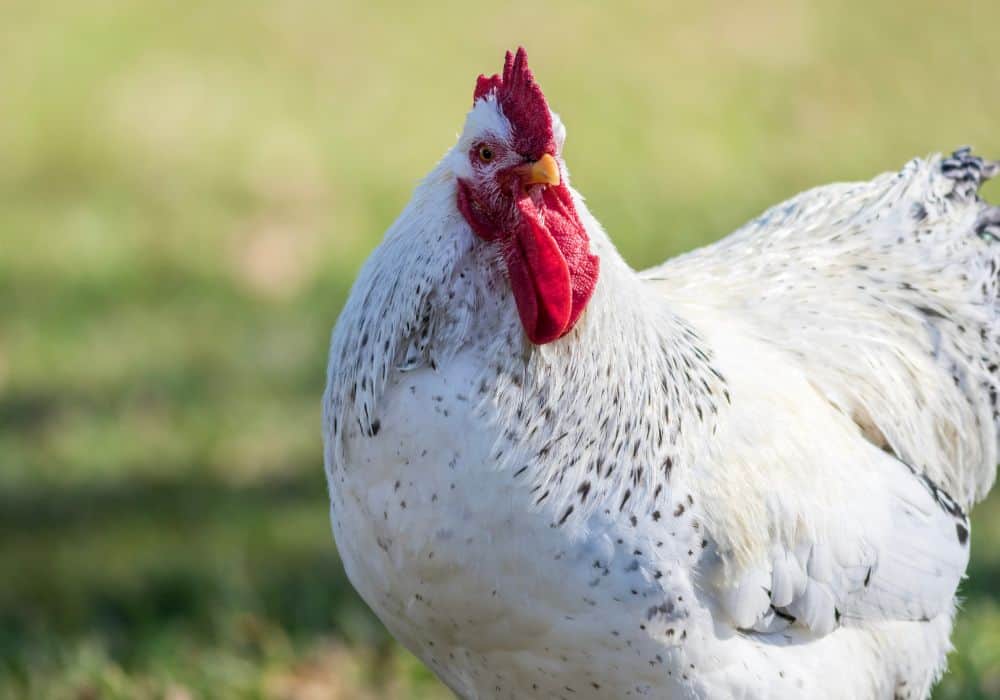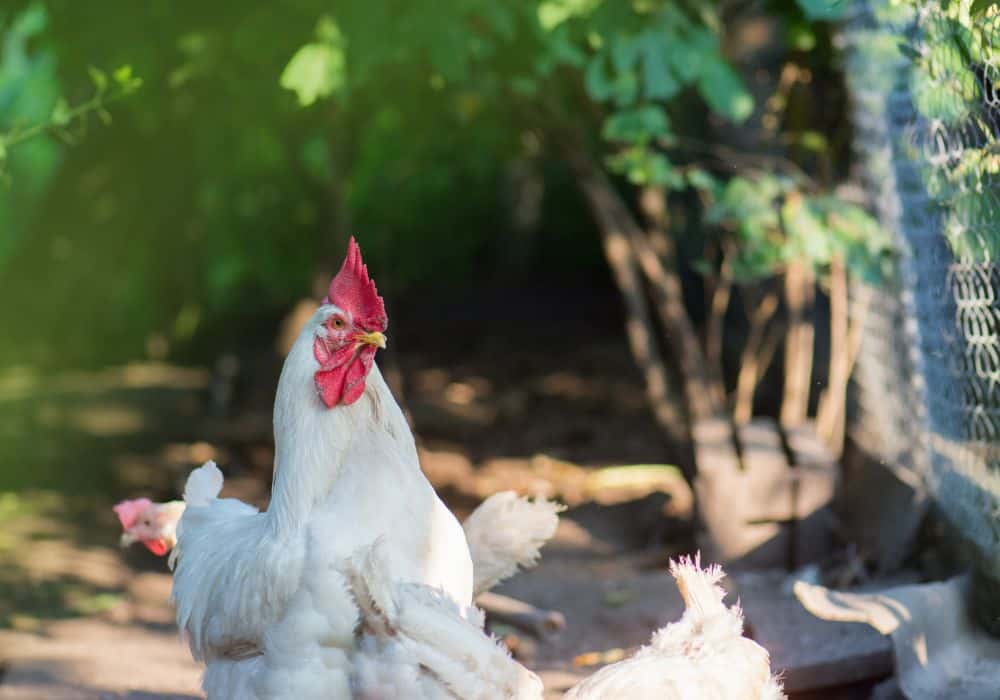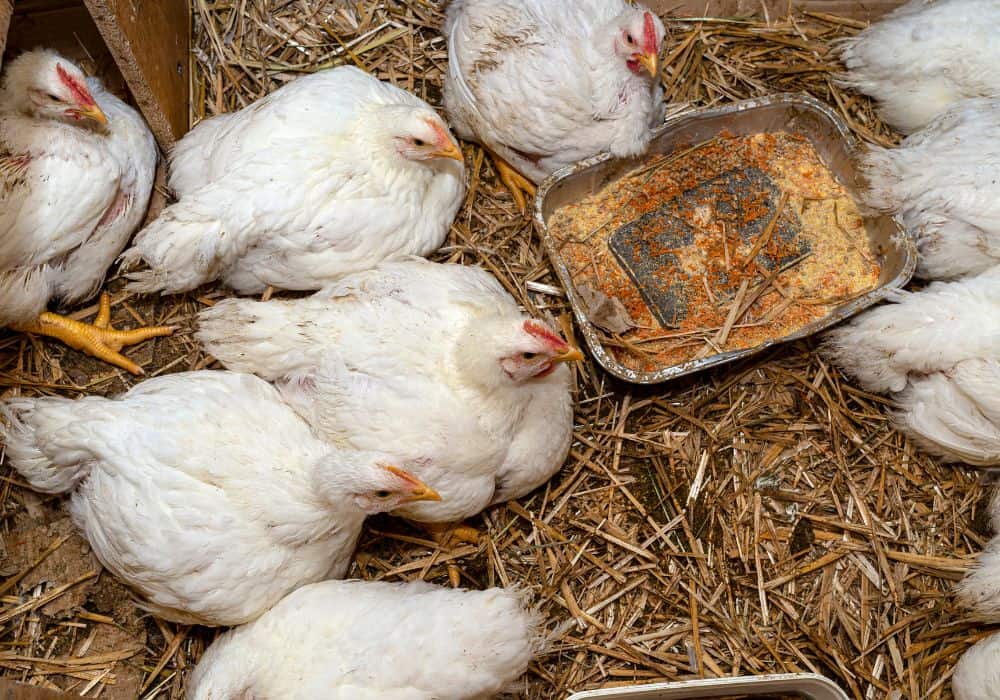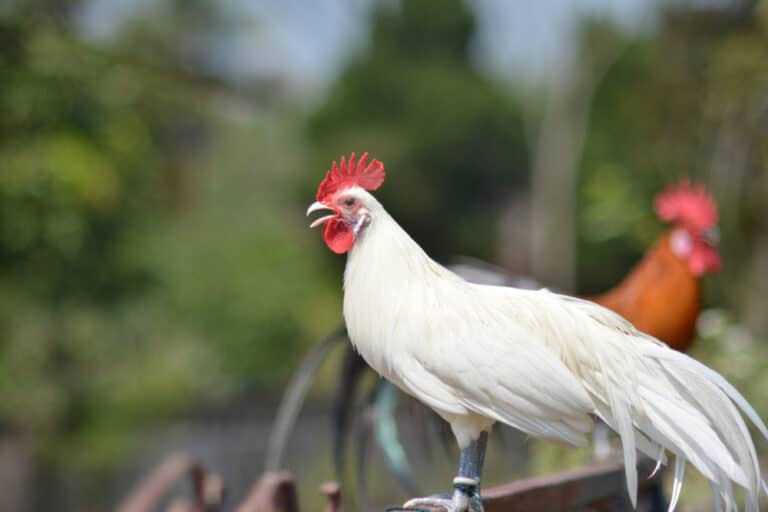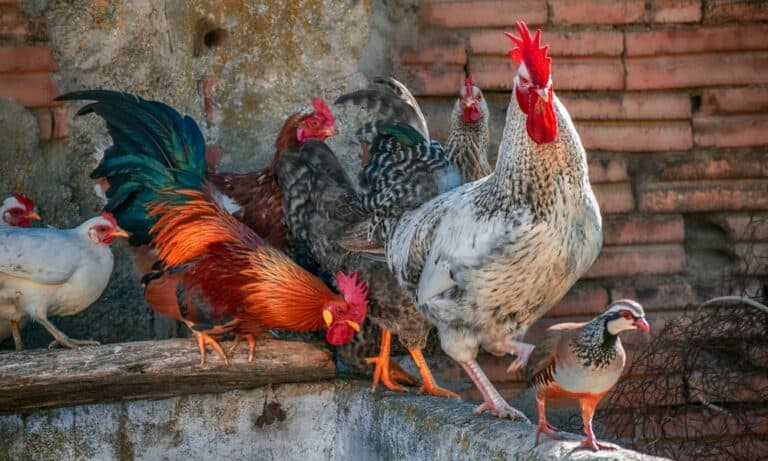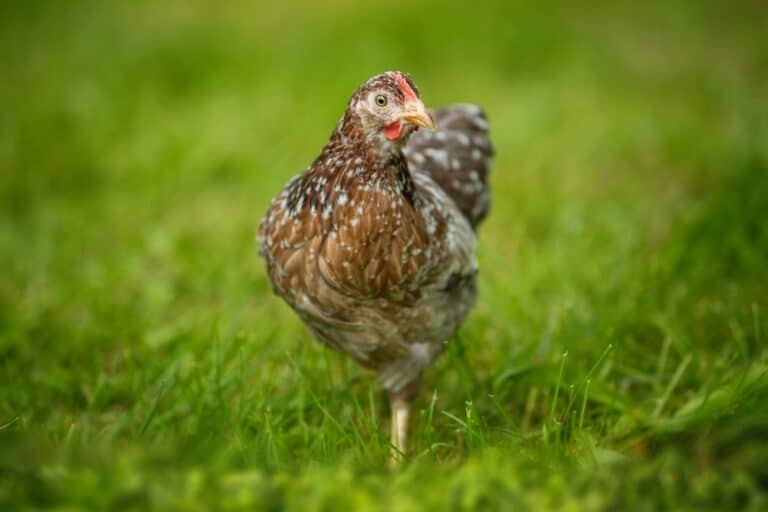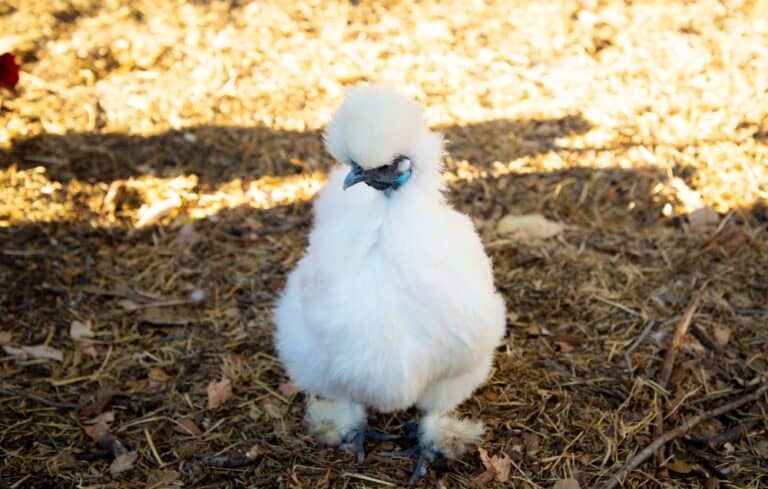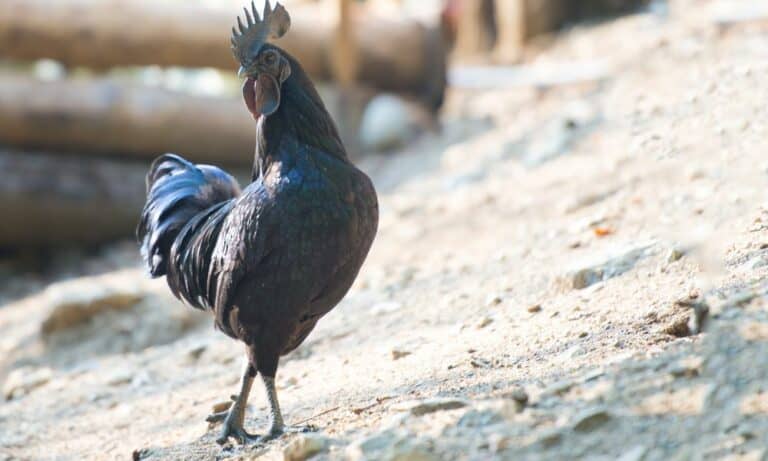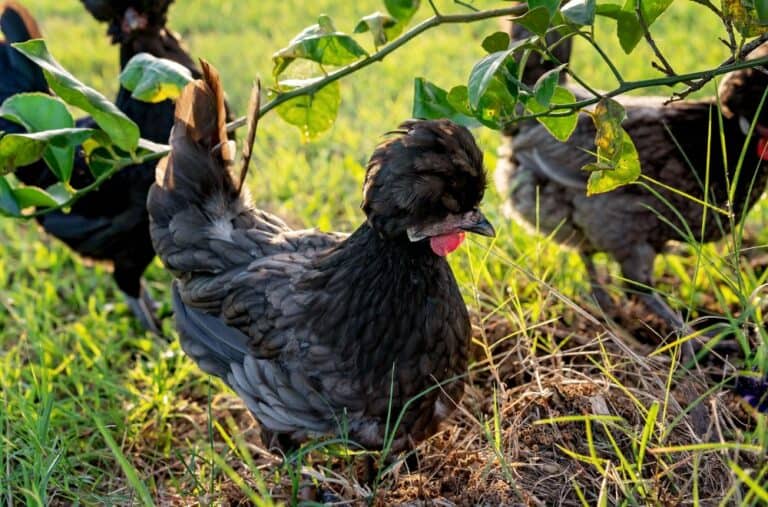Do you remember watching Looney Tunes, and seeing a large chicken named Foghorn Leghorn? As it turns out, everyone’s favorite bird with a Southern drawl is actually based on a real chicken breed that was once found on farms in every part of the United States.
Leghorn chickens may have declined in popularity, but they still do exist. Breeders and chicken keepers who are curious about what a Leghorn can offer may need a little more information before they choose to buy a bird of this kind. We have the scoop on this chicken breed for you.
What is a Leghorn chicken?
Leghorn chickens are also known as Livorno or Livornese chickens. They are a breed that hails from Italy and are known for making some of the best egg-laying chickens in the world. These birds are highly independent and are often valued for their hardiness.
They originally got their name from the Port of Livorno, near Tuscany. However, the breed spread rapidly throughout Europe. By 1828, Livornese chickens found their way to America.
The actual origins of Leghorns as a breed aren’t quite clear. No one knows what the parent breeds were that sparked this chicken, though people do think they are from Minorcas and several other species. That’s a mystery left to history.
By the middle of the 19th century, farmers had called these birds “Italians.” While it’s not sure how they ended up with the Americanized name “Leghorn,” it was a term that stuck by 1865. All things considered, they’re still a part of Americana, much like their toon counterpart.
While they are considered to be a very American breed thanks to their pop culture references, the truth is that they are still steeped in Mediterranean culture. They are one of five chicken breeds from the region that are still widely used.
No matter how you look at it, their egg production is culturally significant.
A quick note about Leghorn chicken breeds…
It’s important to note that Leghorn chicken breeds have different standards in different countries. Your specific country and region will make a difference in what your local Leghorns are allowed to look like.
Leghorns are also divided into two separate categories: industrial and heritage. Industrial Leghorns are bred specifically for making as many eggs as possible in as short a time. Heritage Leghorns are partly for show, partly for backyard keeping, and for keeping the breed intact.
Most of the time, industrial Leghorns are only sold to commercial chicken breeders and companies. This is partly due to the differing standards on egg-laying birds that industries have. Heritage chickens are meant for people who just want fresh eggs in the morning.
What does a Leghorn chicken look like?
Leghorn chickens are medium-sized birds that are typically white with a bright red rose or straight comb. While they are typically white birds, it’s important to remember that they can also come in a variety of different colors.
Most Leghorn birds have yellow skins and yellow beaks. Their wattles, much like their combs, are very large and can flop over. This isn’t a bad thing. It’s actually a sign of their breed. Leghorn chickens can grow to be between five to eight pounds when fully grown.
If you are talking about Bantam Leghorns, then they are extremely small birds. They typically won’t grow past 2.2 pounds. Many stay closer to 1.3 to 1.5 pounds, making them small even for a Bantam.
What kind of varieties can you find in a Leghorn chicken?
This depends on whether you ask the American Poultry Association or if you are discussing Bantam Leghorns. In France, they are divided into four main categories: American White, English White, Old Type, and Modern.
With that said, there are a couple of colors that tend to be more accepted than others:
- White. Both rose comb white and single comb white are common.
- Buff. Single comb buff is more common than rose comb buff. You may also see rose comb light brown varieties at shows, depending on the country.
- Silver. Single comb silver is considered to be the best form of this variety.
- Colombian. These are rarely ever seen as a rose comb. So, if you want a show bird, get a single comb Columbian and check the country where you want to show your bird.
- Red. The most common forms of this type are single comb red and single comb black-tailed red.
There are other colors that you can find, including black, dark brown, lavender, barred, and pyle. With all that said, you have to check the country of origin to see if your colorations are seen as acceptable within the breed.
For example, Italy doesn’t accept any Leghorns that have a rose comb, while America and England do. Because of the age of the breed, there are a lot of different requirements from country to country. In general, white Leghorn chickens are the most common and most coveted.
What are Leghorn chicken personalities like?
Leghorn chickens, both hens and roosters, are fairly independent birds that prefer to keep to themselves. If they see a person they don’t recognize, they can become flighty or even slightly aggressive. So, you may need to keep your distance and earn their trust to start.
It should go without saying that this skittish personality makes them bad lap chickens and should not be given to young children as a pet. (Seriously, do not do this unless you want a crying child that hates chickens.)
It’s worth noting that Leghorns are extremely active birds that are also capable flyers. Their favorite thing to do is to hunt and peck around the yard to find food. They also may start to run around and even try to hop over a fence.
What should you know about Leghorns as egg layers?
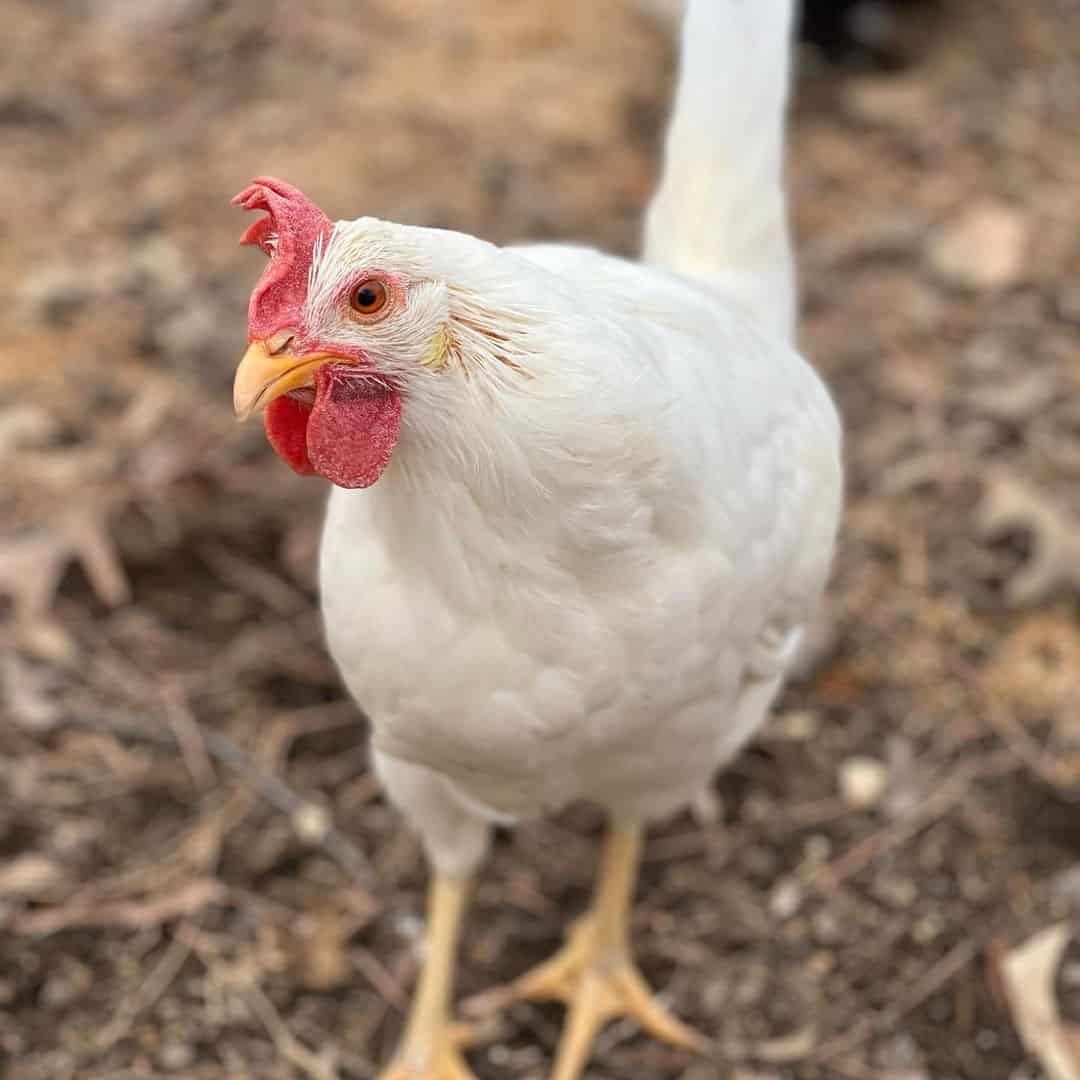
nott_a_farm_
These birds are the best egg layers to come out of Tuscany—or even all of Northern Italy! They are extremely prolific and lay white eggs. Their egg color doesn’t vary, but their egg production can change depending on the color of their feathers.
Regular Leghorns can lay 4 eggs per week on average, which translates into about 200 eggs per year. If you choose one with white plumage, that number can reach up to 5 to 6 per week. That’s almost 300 eggs a year!
These prolific layers will also offer a large egg size. So, it’s a win-win. Egg production companies like them because you can always count on a large white egg from a Leghorn. It helps when you’re trying to sell eggs with a certain amount of uniformity.
What kind of environments do Leghorns need?
When it comes to environments, the name of the game is SPACE. Leghorns thrive in free-range environments where they are given tons of room to frolic and play. You will, however, need very high fences due to their love of flying.
You need at least 4 square feet of coop space per bird, period. When it comes to free ranging, you will need an additional 20 square feet of space for them to roam around. Any less, and they will start to act out.
If you want to raise a backyard flock, then Leghorns have some decent potential. It’s important to note that your backyard will quickly become a major source of the noise. If you live in an area close to other people, these excessively noisy birds are not going to be a good option.
Are Leghorns healthy birds?
For the most part, yes, they are durable and rugged birds that can withstand a lot of temperatures. Like with most other birds, you still have to keep an eye out for mites and other parasites. Even so, they are pretty healthy and work in most climates.
The only drawback is that Leghorn hens are short-lived due to their heavy egg-laying schedule. Most won’t live past six years. In extremely cold temperatures, their combs and wattles can become prone to frostbite.
How should you feed Leghorns?
Because your Leghorns will often hang out and “hunt” outside, there’s some good news in terms of feeding. These birds are light feeders and won’t need too many pellets to satiate themselves.
In terms of the actual chicken feed, Leghorns are not very demanding. You can feed them standard chicken feed without worrying about having to supplement their diet with vitamins. For the most part, they’ll do that themselves by hunting and pecking around.
Are Leghorns broody?
Unlike meat chickens, owning egg-laying chickens means that you have to keep an eye out for broodiness.This can and will impact your hens’ ability to lay eggs, so it’s best to get them to cut it out before it gets out of hand.
Leghorns, surprisingly, rarely ever get broody. They generally do not like sitting on eggs. If you have fertilized eggs, they often do best in an incubator. This unique trait helped cement their reputation as some of the best egg-laying hens in the world.
With that said, hens will get broody if you keep them around a rooster long enough. They are most likely to get broody during warmer seasons.
How much do Leghorns cost?
If you get an individual Leghorn, then you can expect to pay $3 to $4 per bird. Cockerels and cocks are closer to $2.50 a pop, while actual hens are closer to $3.80 to $4. Considering that hens are the primary “draw” to this breed, this should not be surprising.
If you have a minimum order of 100, the average price across both sexes is $2.42, with hens obviously being the more expensive. Since chicks are often bred in industrial quantities, the more you buy, the lower the price will be.
Do Leghorns make good pets?
No, they do not. Leghorns do not crave human contact and will actually start flapping their wings in dismay if too many people get near them. They should not be picked up and should not be given to families as pets. They will not be cuddly with you.
Leghorns also have a tendency to get aggressive with other chicken breeds. So, if you have Leghorns, they may need to be kept separate from other members of your chicken crew. This can vary from bird to bird, so if you need to keep them together, keep an eye out for plucking.
Do Leghorns do well in industrial egg production facilities?
If you are looking for a chicken breed that is prolific in egg production, it’s hard to ignore a Leghorn. These chickens are ideal for large-scale production in terms of egg-laying abilities, but they do have drawbacks that make major company owners rethink having them.
Their two biggest drawbacks come from the amount of space they need and their attitudes toward human beings. Leghorns are extremely active birds that tend to fare poorly in cramped conditions. Most industrial egg-laying companies try to minimize space, so this can be an issue.
Second, Leghorns are already naturally skittish creatures that prefer to be left to their own devices. When they are stressed or introduced to new workers, they can get aggressive or they may make the worker’s jobs a lot harder than they need to be.
With that said, there are specific lines of Leghorn chickens meant for industrial growth. They tend to be bred to minimize these issues. Breeders will often tell you whether they are heritage or industrial. Most industrial Leghorns will be white.
Conclusion
It’s true. Foghorn Leghorn was based on a real chicken breed that came out of Tuscany. You can still buy Leghorns today—and if you are looking for a chicken that strictly lays eggs, you absolutely should.
Famed for their ability to lay eggs, Leghorn chickens are one of the most visible breeds to come from Mediterranean Europe. If you’ve ever tried an egg from a Leghorn, you’ll understand why this particular chicken breed is here to stay. They’re delicious and nutritious!

